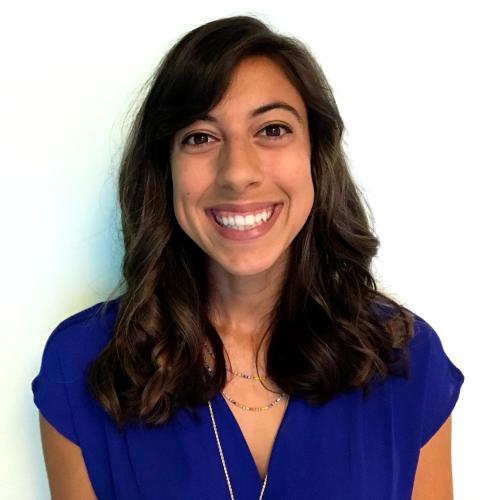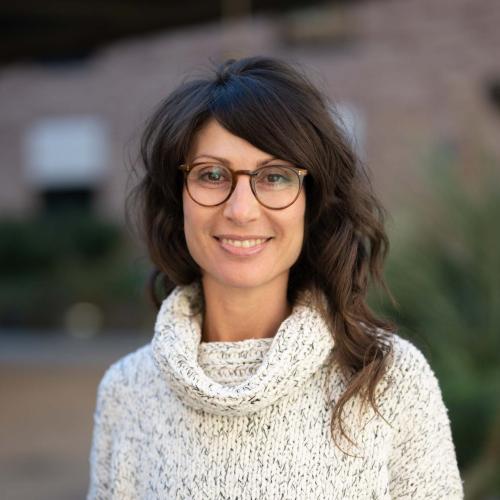UTeach Primary : Hands on Science
UTeach Primary adopts the challenge of preparing future elementary teachers to teach science with Hands-On-Science, a four-course integrated science sequence featuring inquiry-based instruction.
Students are asked questions like, “Why is the moon half dark at night?” or “How does a telescope work?” and then discuss their ideas. They are given equipment to investigate the phenomenon, either recreating it or building replicas in the form of models. Individual memorization is less important than the team of participants working together to acquire the data reliably and critiquing each other’s ideas to develop the most accurate explanation for the phenomena they’ve seen. Expand upon this idea and imagine an education built entirely on this model of instruction, in which children encounter many such challenges over the course of elementary, middle, and secondary school. In the words of Dr. Bruce Alberts, former president of the National Academies of Sciences and editor-in-chief of Science Magazine, “children who are prepared for life in this way would be great problem solvers in the workplace, with the abilities and the can-do attitude that are needed to be competitive in the global economy. Even more important, they will also be more rational human beings – people who are able to make wise judgments for their family, their community, and their nation.”
The Four Courses
Our curriculum uses two underlying concepts to unify the sciences as an extended investigation into a broad range of systems ranging from the solar system, the Earth, life forms that inhabit our planet, and so on. Too often, science is presented as a series of disjointed facts, and we fail to make the connections between the concepts of various disciplines. In reality, all scientists are knowledgeable biologists, geologists, astronomers, chemists, and physicists.
We have developed our curriculum upon two important themes: Matter and Energy, building on work of Goldberg et al. [Goldberg, F., Otero, V., and Robinson, S. (2007), Physics and Everyday Thinking, It’s About Time Publishing.] and Nelson [Nelson, G. (2008), “Physics and Everyday Thinking as a Model for Introductory Biology and Geology Courses,” presented at PTEC-Northwest Regional Conference, Seattle, Washington: October 10, 2008] to extend this analysis to all the sciences.
UTS 306J: Energy and Force
Introduces the idea of energy, how energy is transferred into various forms of potential and kinetic energy in a system through interactions (forces), and the small particle model. Students then apply these concepts in three examples: gravity, electrical circuits, and sound waves.
UTS 306K: Chemistry and Geology
Students learn that electrostatic potential energy is what holds our world together utilizing the small particle model of matter. They learn that elements, molecules and atoms are what make up our universe. We discuss the Periodic Table and show how chemical bonds have the potential to store chemical energy.
UTS 306L: Biological Systems
The themes of matter and energy are integrated into the major course topics of radiant energy, energy transfer in living things, characteristics of living things, compartments, inheritance, and variation.
UTS 306M: Astronomy and Earth Climate
Building upon the inquiry-based methodology and content of previous Hands-on-Science courses (NSC 306J and NSC 306K are prerequisites), we will tackle the fields of astronomy and Earth science this semester. In this semester, we study several topics, including phenomena on Earth and beyond – how distant objects interact and how we perceive them.
Class Structure
Each day will begin with a central question posed to the class. For example, “Why do objects fall?” “How do we generate electrical energy in our homes?” and so on. There is no work to be done here, just an introduction, a statement of the problem to be addressed
In this section of a workshop or class, participants will be asked a couple questions for individuals to consider and groups to discuss at their group tables. In some cases, we will share our responses as a class. The purpose of this time is not to “get the right answer.” Rather, the intention is to brainstorm as to what’s going on, put our ideas on the table, and have in our minds what are other people's explanations for a given concept. There may be some class confusion at this stage, and the instructor, acting as moderator, will highlight the ideas presented with the hope that the remainder of the day’s activities will provide the evidence to support one group’s idea over another’s.
Participants conduct two or three experiments each class or workshop. Each experiment will hopefully challenge you to ask questions about what is going on, and also give you some experimental evidence for you to use when you develop a model of the phenomenon we're studying. Along the way, while you are conducting these experiments, you will be asked some guiding questions to help you think your way through the activities.
At the end of each activity, we have prepared a set of 4–8 questions for participants to work through in their small groups. The questions range from testing understanding of various key points encountered in the experiments to helping develop a scientific model that explains all the data we just took in our groups. After groups have discussed their ideas on these questions, each group prepares diagrams or explanations on white boards to share with the rest of the class. Each group is encouraged to copy data, graphs, etc. to help them make their point and provide more convincing evidence in support of their explanation to the questions or models of the big idea of the day. The discussion that ensues should clarify some of the points raised at the beginning of class in the Initial Ideas section. Ideally, the participants will have discovered the big idea for the day, relying on the instructor only to moderate the class discussion.
Imagine a science curriculum that incorporates the process of questioning and discovery into a hands-on learning environment.
FAQs
Do non-education majors need to take the HoS sequence in order?
No! Starting in Fall 2025, Non-education majors can take any of the Hand-on Science courses in any order. (So if you are enrolled in K, L, or M, you can invite a friend to take the class with you!)
Does this count as a Natural Science credit for non-education majors?
Yes! And it is a fun way to earn that credit!
How do non-education majors register for HoS?
They can email Dr. C at antonia.chimonidou@utexas.edu to be added to the class.
UTeach Primary Instructors & Support
-

Brian Anderson
Associate Professor of Instruction
UTeach Primary / Hands-On Science
-

Laura Chase
Assistant Professor of Practice UTeach Primary / Hands-On Science
-

Dr. Antonia Chimonidou
Associate Professor of Practice UTeach Primary / Hands-On Science
American Association of Physics Teachers
We were invited speakers at the winter meeting of the American Association of Physics Teachers (AAPT) in Jan. 2021. Watch the video to learn more about our program.
Presentations/Colloquium
2011 PhysTEC Powerpoint Presentation
Hands-on, integrated natural science for pre-service elementary teachers. Presented by Antonia Chimonidou and Randi R. Ludwig.
Click here to download.
American Astronomical Society, June 2013
Using AER to improve teacher education. Presented by Randi R. Ludwig.
Click here to download.
Cosmos in the Classroom, July 2013
Using education research to construct learner-centered classes. Presented by Randi R. Ludwig.
Click here to download.

